43 cells of the immune system student worksheet answer key
Cells of the Immune System—Student Worksheet ... Answer the following questions in Google Classroom as you proceed through the activity slides.
Page 2 of 3 Cells of the Immune System—Student Worksheet. 7. Outline the specific steps involved in antibody production in response to infection with human
Howard Hughes Medical Institute 2007 Holiday Lectures on Science Cells of the Immune System—Student Worksheet Answer the following questions as you proceed ...

Cells of the immune system student worksheet answer key
Turning On the Immune System A “lock-and-key” mechanism mobilizes the immune system. When a macrophage inserts a broken envelope fragment into the receptor site of a special kind of white blood cell called a T4 lymphocyte, the whole immune system is readied for action. Like a key turning a lock, the virus fragment turns on the T4’s
invade cells and to multiply once inside of cells. Section 40–2 The Immune System(pages 1034–1040) This section describes the body’s defenses against disease-causing organisms and explains what immunity is. Nonspecific Defenses(pages 1034–1035) 1. The body’s primary defense against pathogens is the .
This worksheet complements the Click and Learn “Cells of the Immune System” developed in conjunction with the 2007 Holiday Lectures on Science, ...
Cells of the immune system student worksheet answer key.
_____ 12. A major function of the humoral immune system is to destroy proteins that are nonself. _____ 13. Both T cells and B cells have receptors that bind specifically to a particular antigen. _____ 14. Helper T cell cytokines stimulate the development of B cells into mature antibody-producing cells. _____ 15.
Howard Hughes Medical Institute 2007 Holiday Lectures on Science Cells of the Immune System—Student Worksheet Answer the following questions as you proceed through the activity slides. 1. Name one type of cell involved in each of the following processes: a.
immune cells. The Immune System in Action The immune response works in two ways. In humoral immunity, white blood cells, called B lymphocytes (B cells), make antibodies that attack pathogens in the blood. In cell-mediated immunity white blood cells, called T lymphocytes (T cells), find and destroy abnormal or infected cells.
Cells of the Immune System—Student Worksheet . Answer the following questions as you proceed through the activity slides. 1. Name one type of cell involved in each of the following processes: a. Innate immunity: _____ b.
Immune System. Quiz Answer Key. 1. The. immune. system protects your body from sickness and germs. 2. Leukocytes. are white blood cells that seek out and destroy organisms or substances that can . cause disease. 3. Lymph nodes. are glands that work like filters to remove germs. They’re found in your neck, armpit, and other areas. 4.
Vertebrates have an additional powerful immune response called adaptive immunity. This Click & Learn describes key elements of the adaptive immune system, including B cells and antibody molecules, helper T cells and cytotoxic T cells, and antigen presentation. The accompanying worksheet guides students’ exploration.
Author: Ann Brokaw, Rody River High School, Rocky River, OH Answer the following questions ... Page 2 of 3 Cells of the Immune System --Student Worksheet 7.
plentiful in these cells in order to provide the energy for movement? Sperm cell; flagellum; mitochondrion (for cellular respiration) 2. What is the function of the Red Blood cell? To carry oxygen and remove carbon dioxide from cells 3. Which cell is involved in the immune system? White blood cell (B cells, T cells, macrophages) 4. Which cell ...
Page 2 of 3 Cells of the Immune System—Student Worksheet. 7. Outline the specific steps involved in antibody production in response to infection with humanMissing: key | Must include: key
3. The dendritic cell then transport the virus to a lymph node. 4. In the lymph node, there are specialized immune cells, and that is where the immune response to HIV begins. At this point, B cells interact with the virus and those B cells - because of the ability to recognize HIV - will transformed into a cell called the plasma cell.
Does an individual T cell have the ability to recognize more than one type of antigen? Explain your answer. 12. Explain the relationship between the antigen- ...





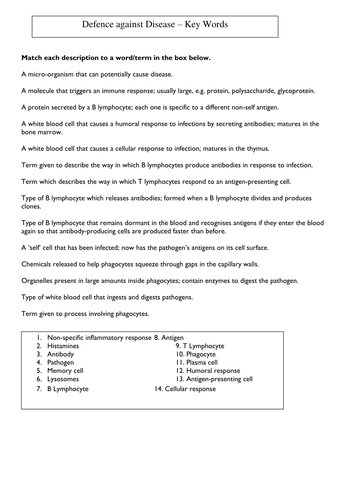
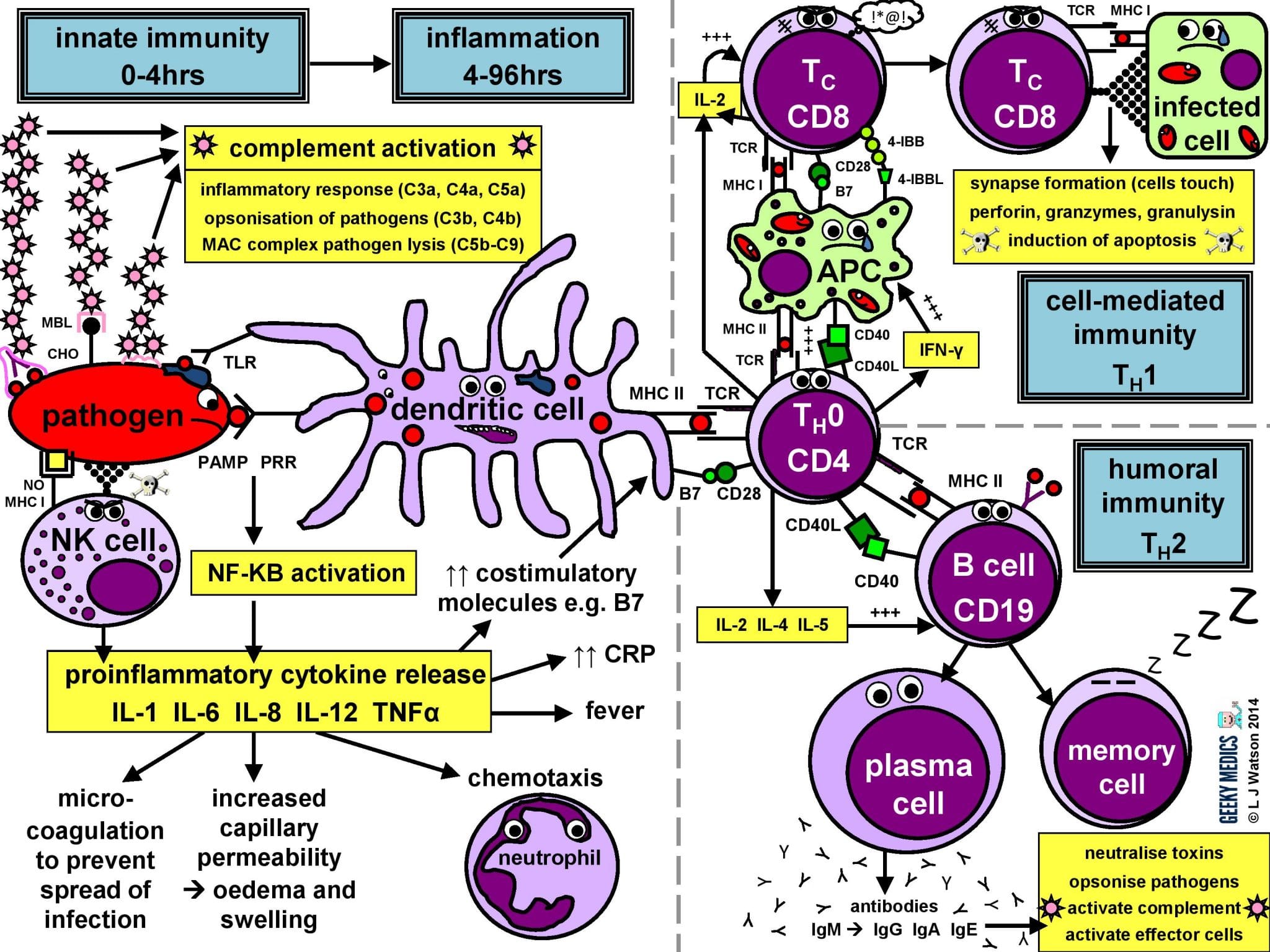




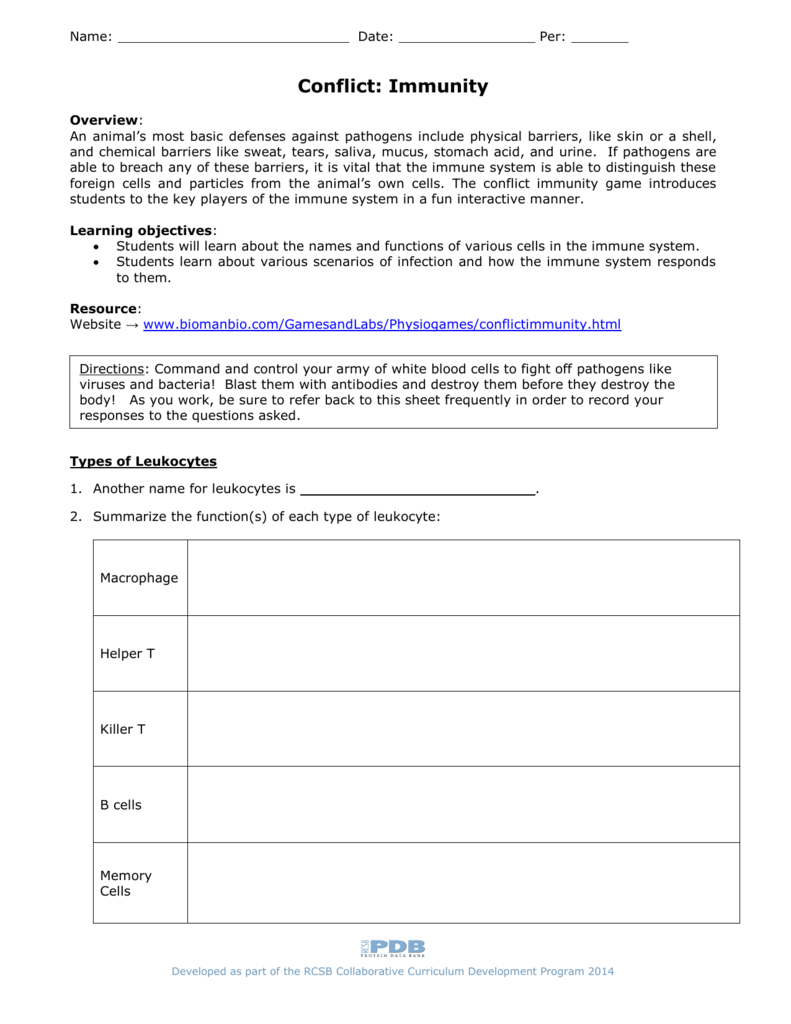
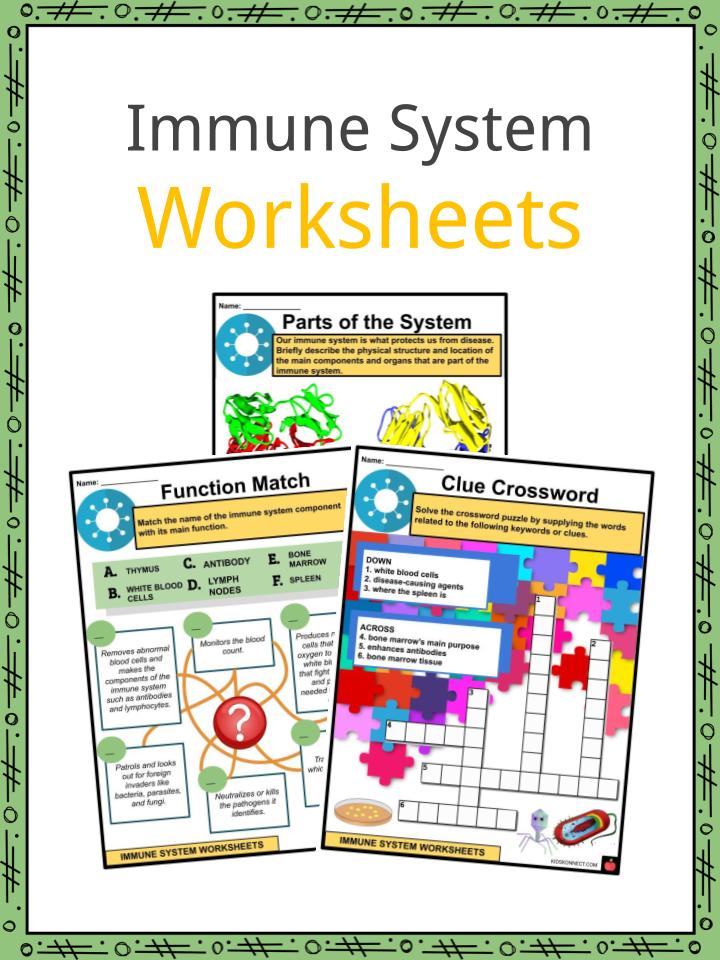
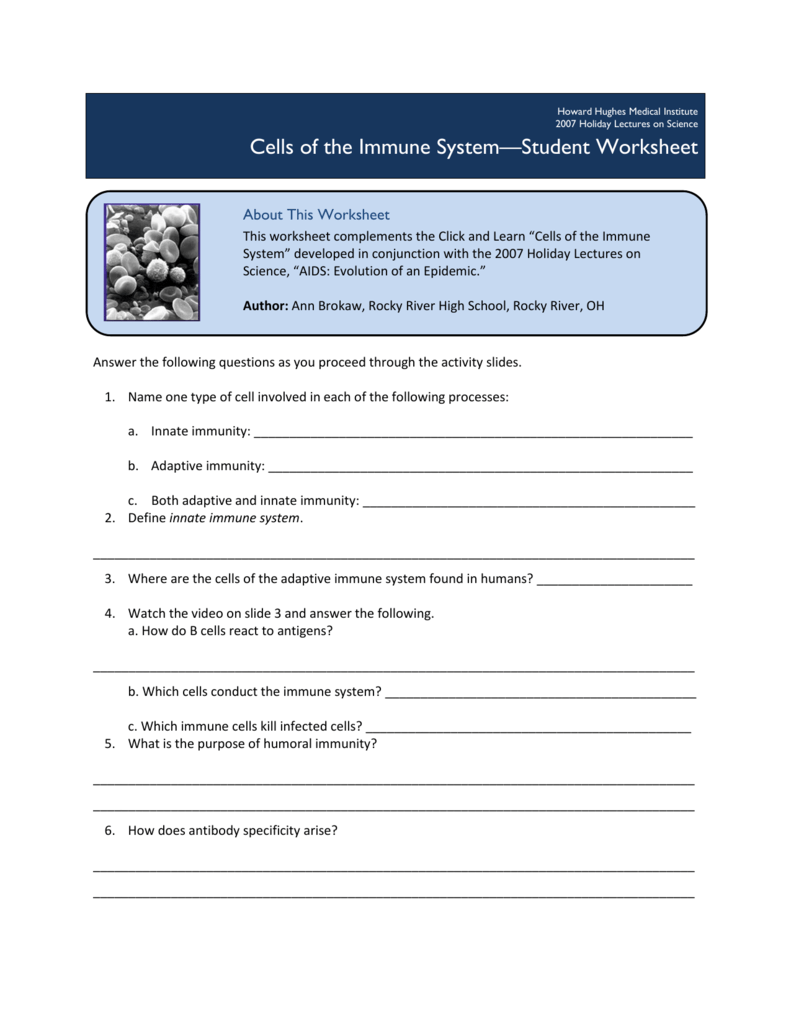



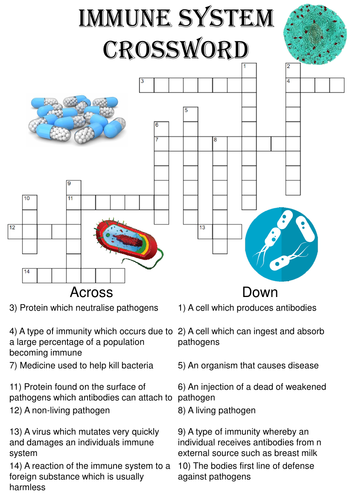







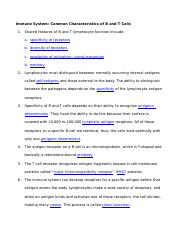


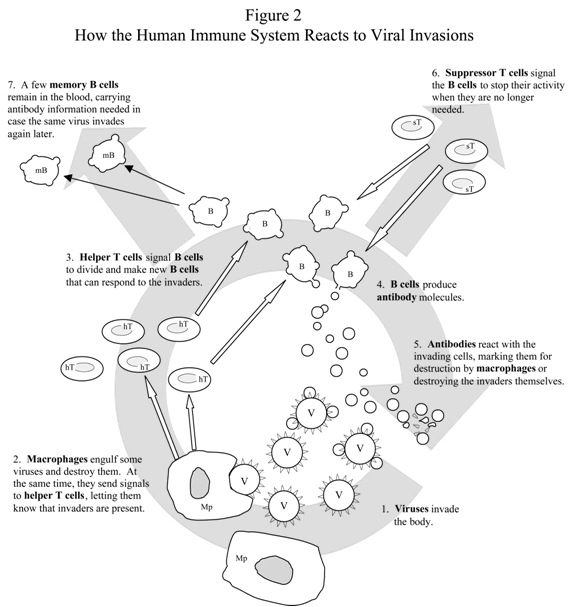

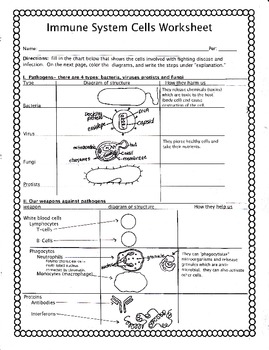







0 Response to "43 cells of the immune system student worksheet answer key"
Post a Comment